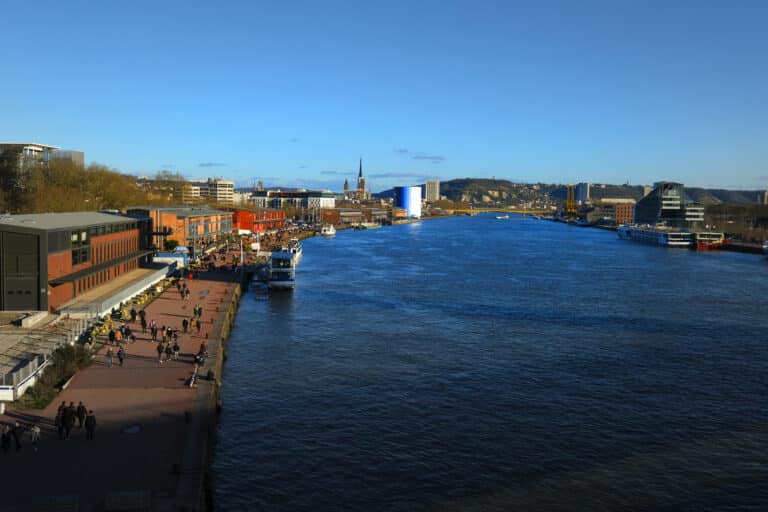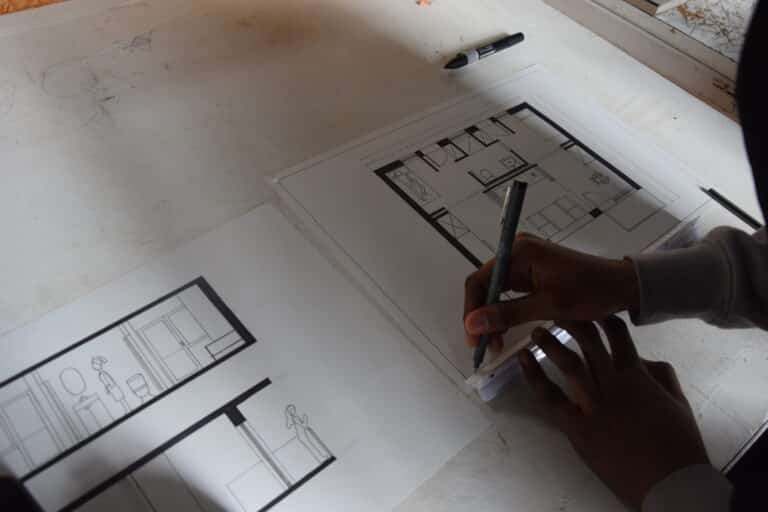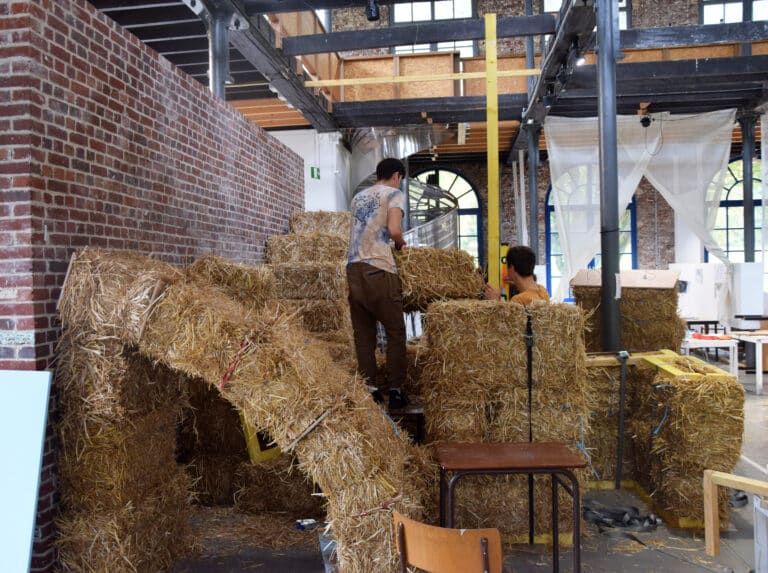The ENSA Normandie school project questions the nature of a school of architecture based in Normandy, and its relationship with the world opened up by its location.

"Working together with the region
Responding to situations of risk and precariousness
The École nationale supérieure d'architecture de Normandie (ENSA Normandie) is the only architecture training establishment in the Normandy academic region.
A key player in Normandy's higher education and research landscape, ENSA Normandie is a member of the Comue Normandie Université, alongside other universities and grandes écoles. ENSA Normandie also works closely with institutions in Normandy - local authorities, the CAUE, the regional council of the Order of Architects, the Maison de l'Architecture, the DRAC, professional bodies and scientific networks - to contribute its expertise to the construction of high-quality, resilient and environmentally-friendly living spaces for all. The major challenges facing this region include maritime and river risks, industrial and agricultural reconversion, interconnection with the Greater Paris area and the revitalization of depressed areas.
The Axe-Seine region isparticularly affected by these major contemporary issues, with rapid and far-reaching changes in the way values are produced, combined with natural and man-made risks. The Normandy coastline from Le Tréport to Mont-Saint-Michel is seeing its coastline recede, subjecting towns, villages and landscapes to reconfigurations of the human biotope in response to strong pressures from tourism, real estate and industry (offshore wind farms, fishing ports, nuclear power plants, etc.). The obvious impact of climate change is placing the Normandy region, and consequently ENSA Normandie, in a position to experiment with "critical zones", with a view to developing expertise in the opportunities they offer. In response to these challenges, the School is working with international players facing similar challenges, to enrich local practices through the exchange of know-how and social experience.
ENSA Normandie's territorial roots are therefore firmly anchored in the global challenge of adaptation and mitigation, and it is positioned within a European and non-European scientific network to define the levers for action.
"Making the most of local resources
Backing the project with scientific expertise
Architecture, in both its cultural and technical dimensions, makes the world habitable. But as a major consumer of resources, it must reinvent itself in a world of limited resources.
While the history of architecture demonstrates the frequent reuse of materials, the industrial era has produced a single, often polluting, consumption model. Recognizing that a major environmental impact of buildings lies in the extraction of raw materials and their transformation, architecture today must promote reuse, better construction and less construction, in a transcalary and multidisciplinary perspective.
This approach raises questions about the perimeter of resource territories, the preservation of built and living heritage, and the use of materials and implementation know-how.
Drawing on the work of its laboratory, the École has formalized the extension of the notion of resources in architecture to the climate and existing buildings.

ENSA Normandie is an active member of the local IPCC, contributing to discussions on adapting the living environment to climate change as it affects the region. This way of looking at the climate - not just as a threat, but also as a resource and an opportunity for architecture - is concretely reflected in the teaching content and research directions.
ENSA Normandie considers existing buildings as raw material for training students in architecture, and is developing a base of scientific knowledge to structure these practices.

"Doing for" experiential education
Creating differentiated student paths
ENSA Normandie has developed a unique teaching approach based on practical experience, placing students "in the situation of".
Whether we're talking about scale 1 creations, scientific experiments, in situ work with local players, surveys or visits, each approach engages the body and mind in learning.
In an age of data saturation and generative artificial intelligence, ENSA Normandie believes that architectural education should be more experiential than ever.
The mastery of gestures - from design to construction - is essential to create architecture that is frugal, comfortable and desirable. These are the prerequisites for mastering the discipline, skilfully articulating spatiality, structure and use.
This pedagogy requires a strong ambition, centered on the student as a player in his or her training. The ability to interact, collaborate, manage communication and time are all integrated and assessed skills. International mobility and dual-culture courses (architect-engineer or France-Vietnam) structure the student experience.
ENSA Normandie invests in high-performance infrastructures to support this pedagogy: workshops, support on scale 1 sites, organization of travel and development of a network of professional partners.
"Architecture as part of the living ecosystem
Broadening the scope of architecture
Protecting biodiversity, managing natural resources sustainably, reducing the artificialization of land (ZAN) and the territorial organization between rural and urban areas are becoming major challenges.
Architects' specific skills enable them to design spaces that preserve or restore ecosystems, by integrating natural elements - water, soil, vegetation - into architectural and urban projects. This implies enriching training with knowledge from ecology and environmental engineering, and particularly involving the landscape discipline in project practice.
ENSA Normandie aims to explore in depth the interactions between buildings and their environment.
This approach includes lessons on adapting to local climate, managing urban heat islands, using low-impact materials, ecological corridors, water management and social issues related to the living environment. Through on-site workshops, fieldwork and partnerships with academic and professional experts, students will take into account both the biological dynamics of ecosystems and the social needs of residents.
